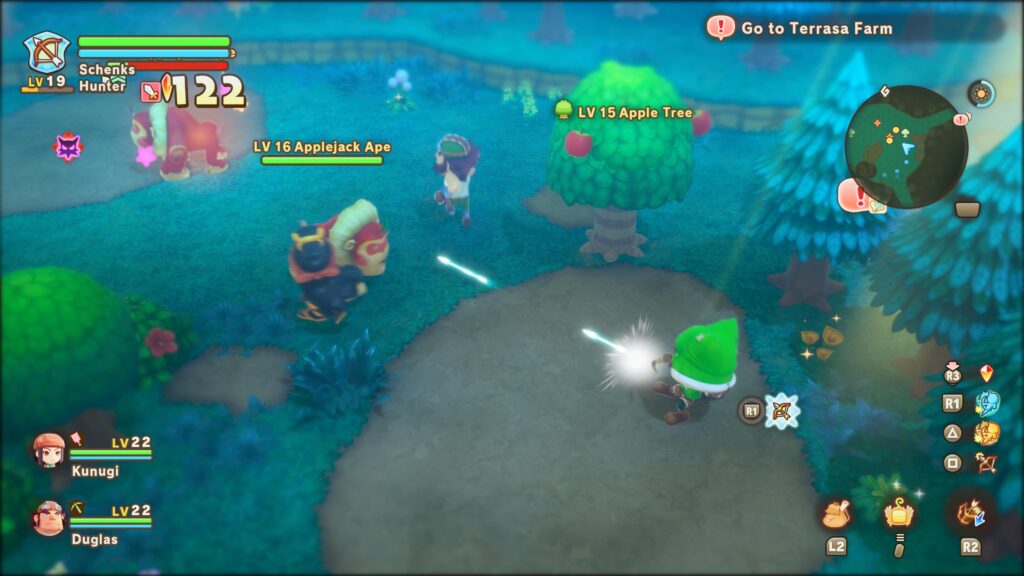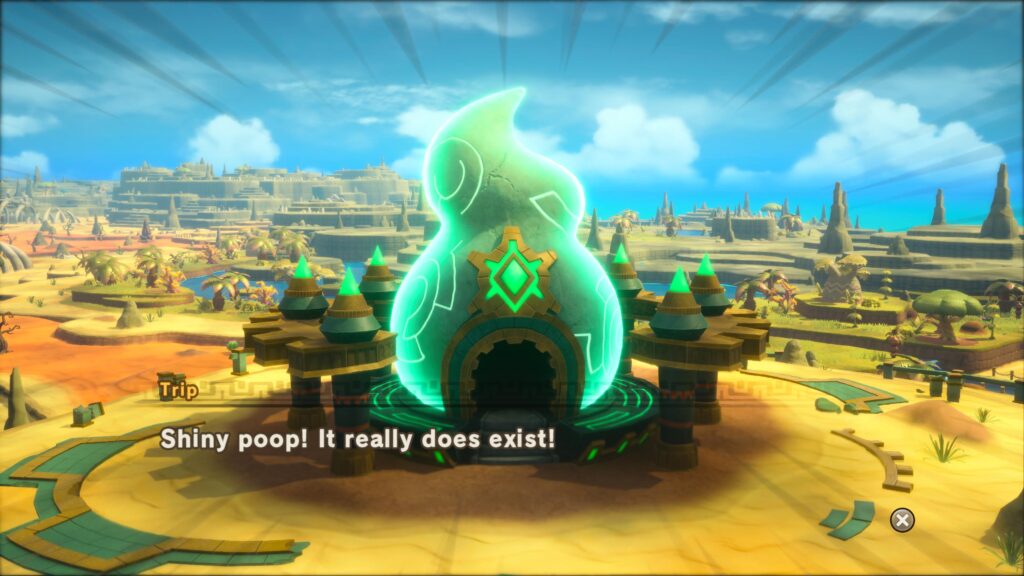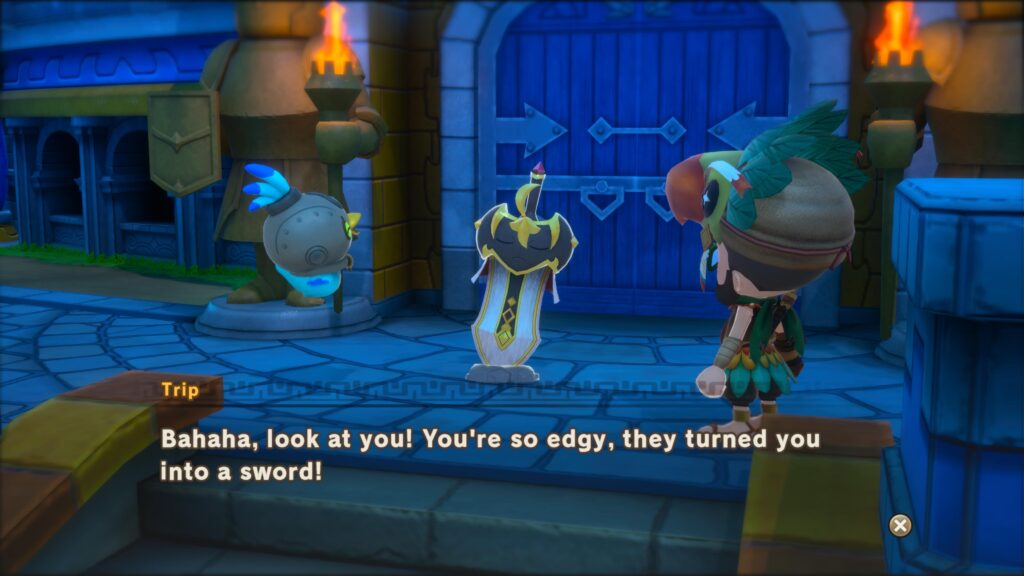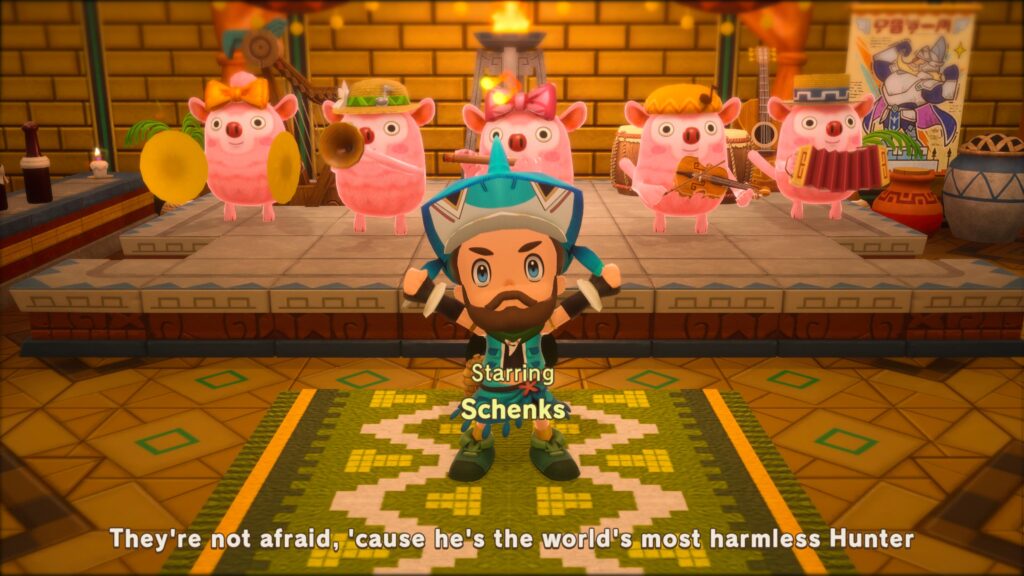- Genre: Action/Adventure
- Platform: PS5
- Also Available On: PS4, Xbox One, Xbox Series, Steam
Even for Yakuza side games this is a wild one. I can ignore all of the action melee combat parts of the game that were done just as well as the last time they had a side story and I’m still left with an entire new game of pirate shenanigans. This is just another entry in what has been a remarkably consistent series over the past couple decades, and one that seems to be able to just keep pulling new things out of its hat.
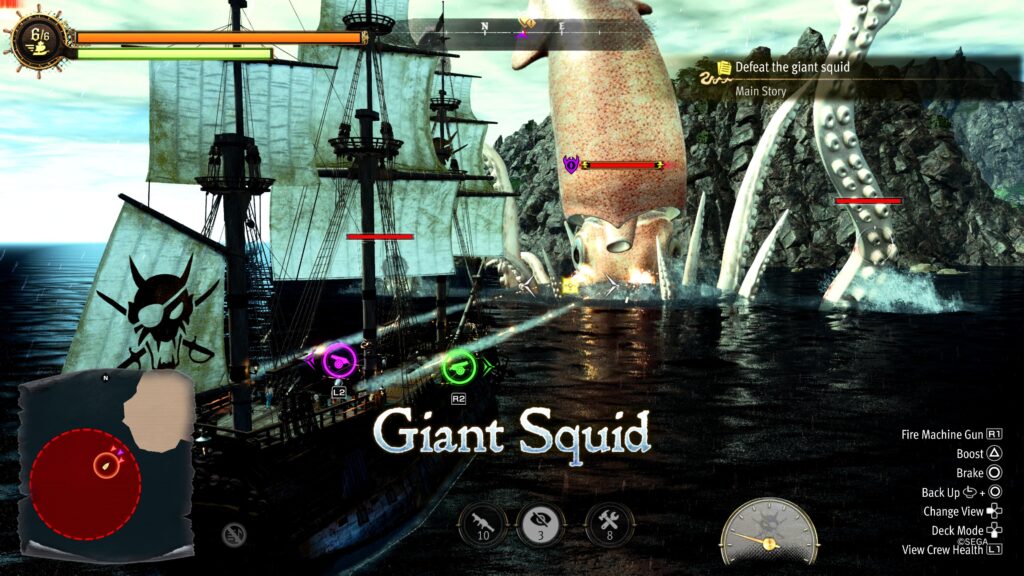
The nice thing about this being another melee-focused side entry is I can just skip all of that stuff for rambling. Read the combat ramblings on Like a Dragon Gaiden and you will know my thoughts there. Instead, I’m just going to talk about being a pirate. This game just does it so well. The thing that I want out of a pirate experience is basically two things – I want to fight things in a boat and I want to plunder treasure, and this game does it in spades. The basic combat loop of any pirate encounter is that you first engage in ship to ship combat, then after you defeat the boss ship you go crew vs crew. Now, I would never say that either of those phases is done at a particularly AAA quality level but the feeling of it is there.
On the ship side of things, you’re looking at a quick paced combat with three sets of weapons – a machine gun, left cannons, and right cannons. Each can be upgraded separately, allowing for things like freeze cannons on one side and poison cannons on the other with machine gun damage out of the front. The ships defense can be upgraded, which for me generally meant that I could do increasingly stupid things ramming into enemy ships. The ship’s ability to heal and boost (yes there’s a jet engine boost, complete with ship drifting capabilities – this isn’t realistic) can be upgraded to allow for more aggressive maneuvering.
As simple as it is, the chess game of this portion of the game is just incredibly tight. You’re basically using the boost and drift to avoid enemy fire while putting yourself into an advantageous position to fire back. You can certainly play in different ways – if you want to be defensive, you can stay at range and poke down weaker ships before focusing on the boss, or if you’re like me you will boost straight at the boss, ram it, and eat damage to nuke down the boss all at once – and they’re all kind of going to be equally the right way to play, besides situations where time is important. Importantly though, it’s not drawn out so it is always quick, full of action, and fun.
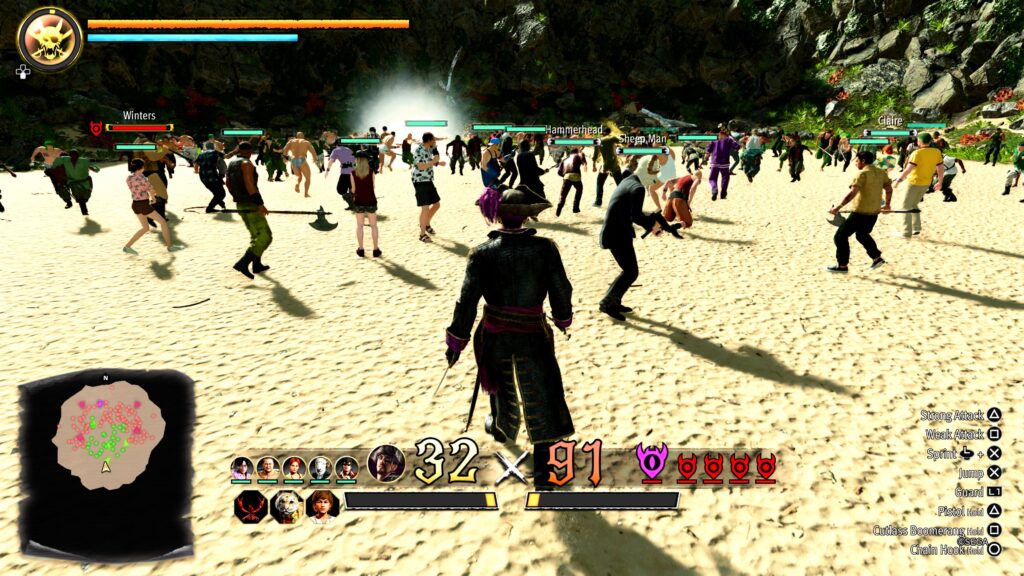
The crew fights are then about as chaotic as possible. If the normal combat gameplay is the tight Yakuza experience, this goes in the complete opposite direction. Crew fights are pure chaos. You don’t really need to play carefully. You don’t really need to focus on specific targets. You don’t really need to aim at anything. You just run in with your people, spam attacks, and watch pure chaos unfold. As a pure pirate fantasy it nails a lot of what I want in terms of building a crew and going in on anything as a whole.
Outside of combat this is then backed by your ability to interact with individuals to build the crew. A lot of the crew throughout my course of the game was built from people that I helped in side quests in Like a Dragon: Infinite Wealth so there’s an immediate sense of familiarity there. They then are recruited and end up on the ship while I’m out and about, allowing me to go around chatting with them. They are there during things like karaoke events on the ship or parties that I can throw as the captain reinforcing the whole idea of this being a crew supporting each other. It’s a lot of surface level stuff, but it’s effective at continuing to sell the feeling of this as a pirate game.
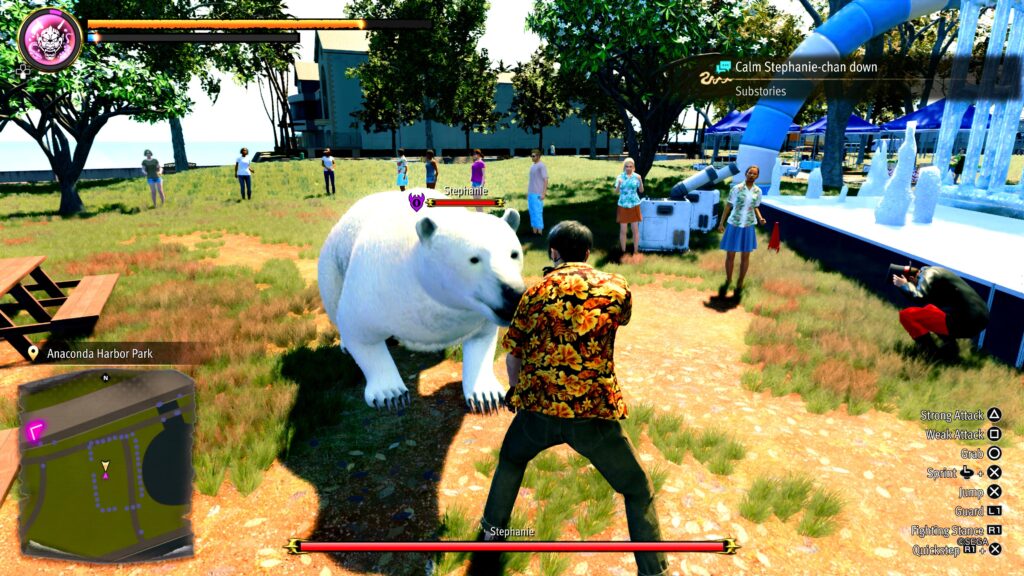
The rest of this is then all the normal trappings of a Yakuza title. There’s side quests all over that you can go after, most of which are absurd things like fighting zoo animals or robot vaccums. There’s activities ranging from karaoke to darts to Mario Kart-style go karting. Based on the location, there’s the return of some stuff from Infinite Wealth like photo locations. There’s sports like the golf driving range and explosives-based batting cages. There’s completely absurd things like a dating sim that you run for one of the members of your crew, complete with the live-action filmed segments that have somehow continued to end up in the series. There’s an entire series of arena-focused combat around pirate ships. It’s all there, but wrapped in some pirate clothing.
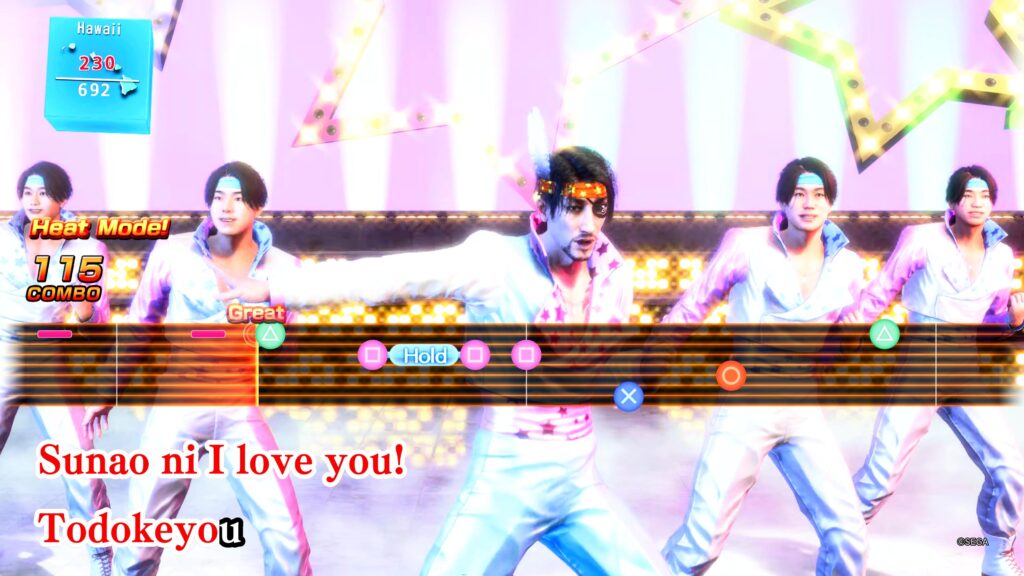
I’m not surprised that I enjoyed this game. I’m not surprised that it’s a good game. I’m not surprised that the melee combat was tight and a lot of fun. I’m more than 10 games into this series at this point, so this is all expected stuff. What I’m happy about is that for a series that has always turned the ridiculousness to 11, they’ve somehow been able to turn that dial even higher and yet it still doesn’t feel like they’ve hit a point where it’s all too much. It’s just worth playing.


